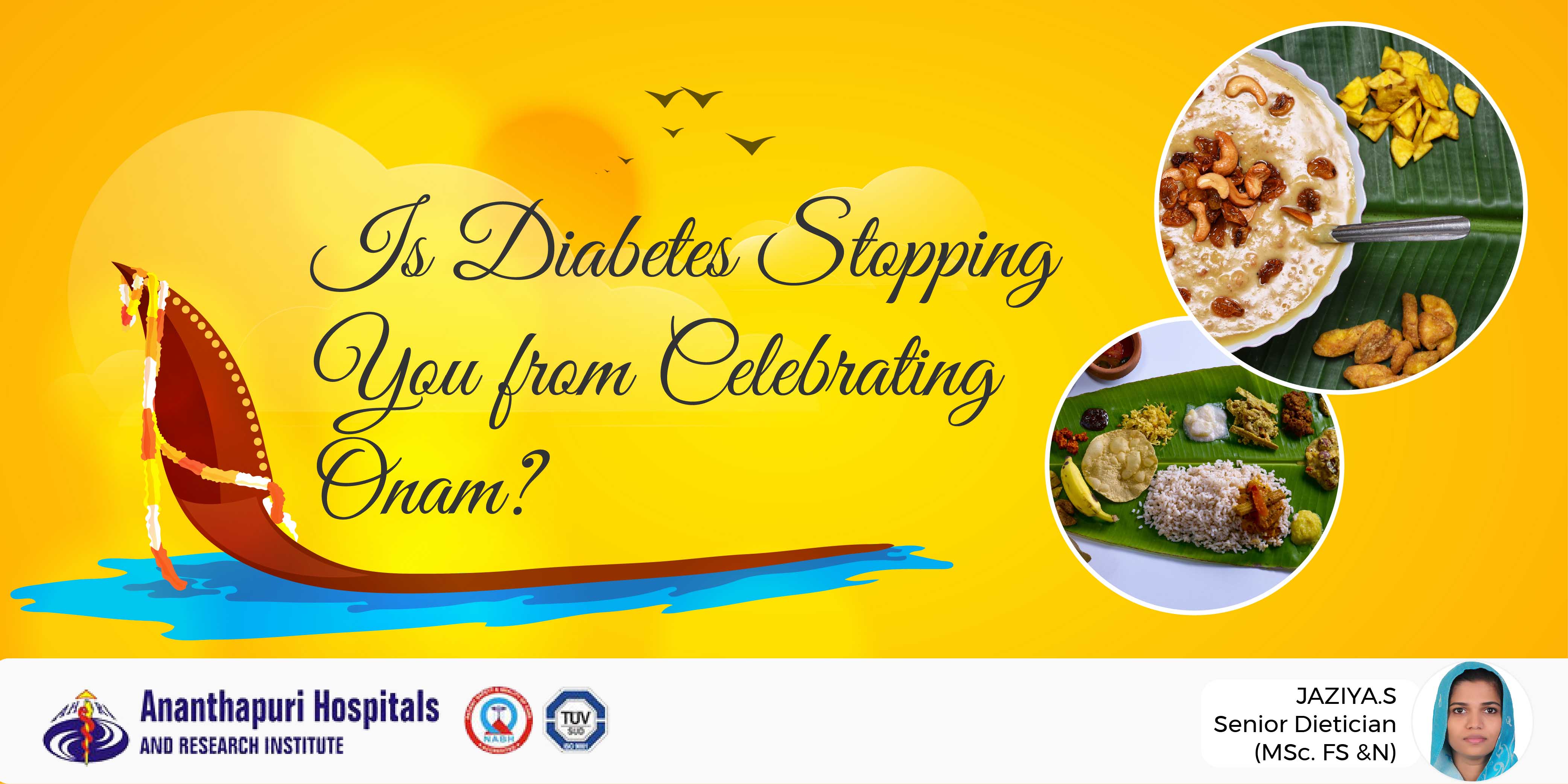- 06/September/2019

Is diabetes stopping you from celebrating Onam? | Ananthapuri Hospitals
Malayalis all over the world celebrate Onam, the 10-day harvest festival filled with ritualistic games, merriment and lots of exceptional dishes. Legend has it that Onam celebrates the visit of King Mahabali to the state of Kerala. And for Malayalis, there’s no better way to welcome the much-loved Maveli than by preparing a grand feast - THE ONAM SADHYA: the inevitable part of Onam. A traditional Sadhya is served on a banana leaf and it consists of vegetarian dishes that include both savoury and sweet preparations.
The culture of indulging in the grand Onam feast is hard to shake off, especially when festivities are in full swing. Just when you begin to think of the flavours and the sweetness of Onam Sadhya, reality sets in and hits you hard - you have diabetes.
Diabetes is a metabolic disorder that affects the way the body uses and stores glucose (sugar). People with diabetes should avoid an overabundance of sugary desserts and carbohydrate-rich foods and follow a regular exercise routine. What is perhaps the biggest struggle reported by most people diagnosed with diabetes, is maintaining their healthy diet on special occasions. It is possible to employ self-control and resist temptation but an Onam without Onam Sadhya is like Christmas without Santa!
To ensure you have a good time without putting yourself at risk, follow these simple guidelines:
Before the meal:
- Ask your doctor how you can include Onam delicacies into your meal plan. For instance, it may mean more exercise or an increase in insulin dosage
- Sleep loss can make it harder to control your blood sugar, and when you’re sleep deprived you’ll tend to eat more and prefer high-fat, high-sugar food
- Drink plenty of water on the day of the festival to keep yourself well hydrated and energised
- Try to cook Sadhya at your home instead of opting to have from restaurants. By doing that, you would have much better control over the amount of sugar, carbohydrates and calories
During the meal:
- Payasam made of ‘pottukadala’ has a lower Glycemic Index (GI) than the other payasams made of rice, wheat or other pulses. Food with a low GI raises blood sugar lesser than an equal amount of high GI food
- If you decide to make rice payasam, prepare it with brown rice instead of white, as the former is rich in fibre and a good source of manganese and selenium
- Slow eating can benefit in better digestion, better hydration, easier weight loss or maintenance, and greater satisfaction with our meals
- It is always best to skip payasam while having Sadhya. However, if you do decide to savour two bites, make sure to have less amount of rice and also compensate it with an activity that reverses the effect
- Don't drink payasam immediately after having the main course. Consuming carbohydrate-rich food along with sugar-rich food without much time interval is unsafe as it increases the blood-sugar count in your body drastically
After the meal:
- It is always a good practice to put your plate down after you are through with your first helping as second helpings can add undesirable kilos
- Offer to help clean up after a meal, it can also help in digesting the heavy meal
Even though indulging in this grand feast is a major part of the festival, Onam is all about celebrating and connecting with the people you love. When you focus more on the fun and frolics of the festival, it’s easier to focus less on the food. As with any diet, it is always best to consume a moderate amount of food.
During Onam, you might be on vacation but your diabetes isn't. Never let diabetes control you, instead, have firm control over it.
Ananthapuri Hospitals has an excellent team of nutritionists who can give you expert advice on a balanced diet for you and your family. To book an appointment, call us at +91 9400332777 or visit our hospital at Chacka, NH Bypass, Thiruvananthapuram.

